The Wolfenstein franchise is one of the longest running and most consistently “good” series in gaming. Still, even such a valuable IP sees dips in acclaim and/or popularity, it is only normal. The 2009 sequel/reboot, whilst not a bad game per say, was also not a major seller nor a critical hit. Its middling success had the series temporarily frozen.
However, in 2014 MachineGames released their first title, Wolfenstein: The New Order, with Bethesda as the publisher. It is a reboot/sequel for the franchise. The veteran game developers working in the fairly young studio managed to create a game that was very well received by both fans and critics alike. Combining elements of the older, classical arcade FPS games with a newer emphasis on storytelling, it was seen as quite the surprise. In today’s article we aim to see whether the game really warrants its acclaim and how well it managed to tell its complex story – a first for this great series.
Graphical Fidelity and Audio
| 64-bit | Yes |
|---|---|
| Linux Support | No |
| Graphics API | OpenGL 3.3 |
| Frame Rate | 60 FPS Limited, id Tweaker needed to unlock |
| High Resolution Support | Yes |
| Ultrawide Support | Yes |
| High Refresh Rate Support | Yes |
| VR | No |
| Display HDR | No |
| Ray Tracing | No |
| Multicore CPU Support | 4-8 cores |
| Adjustable FOV | Config file |
| Anisotropic Filtering | 16x |
| Anti-Aliasing | Mediocre (8xMSAA, must be forced) |
| Sound API | XAudio2 |
| Sound | Up to 7 channels |
| UI Scaling | Some, flawed |
| Debug Console | Limited |
| Modding | File-level access, no official tools |
The New Order is powered by the id Tech 5 engine first demonstrated in Rage. The Swedes haven’t done any major changes under the hood, but rather address its faults and make the game look and perform better on low end hardware as well as improve its particle and lighting sub-systems.
id Tech 5 is a major departure from id Tech 4. The developers of the engine, id Software decided to take their bets with the “Megatexture” technology, which first premiered (albeit in a limited fashion) in Enemy Territory: Quake Wars. This technique allows the engine to automatically stream textures into memory as needed, meaning that developers need not concern themselves with memory restraints or texture limits. This has the advantage of simplifying the creation of content, by eliminating the need to adapt content for different platforms. The engine automatically optimizes resources for cross-platform development, making it possible to render the same models on different platforms, while creating them for only one platform.The engine also has further tweaks such as high dynamic range, penumbra and better materials processing over the old versions. However, whilst an incredibly important and impressive step forward, one that will culminate into id Tech 6 (which is an absolute beast!) it has many flaws.
Shamus Young on megatextures and id Tech 5
Speaking of which, the id Tech 5 engine is a very strange beast. The aforementioned megatexture technology has allowed the title to run really well on low end systems, surprisingly well even. It makes very good use of CPU multi-core performance but it is not exactly a CPU demanding title to being with. The problem though is how the game scales with settings. The game on Ultra settings does not look that much better than the game on Low settings, yet it also runs a lot worse. Even on current day, high end systems with several times the CPU and GPU performance of 2014 hardware, the game can stutter or have illogical frame rate drops.
Characters look pretty damn good with well made textures and models. A lot of love went into these designs and it shows. The general attention to detail for uniforms deserves praise as well. Textures on the world though are… somewhat mixed. Some truly ugly, aged textures exist in the game. Aesthetically they are coherent so it does not detract from the atmosphere and feel too much, but its a shame really. Of course on the bright side some truly good texture work and very unique-looking areas exist, hence why its a mixed bag and not outright bad.
World details on the other hand are quite lacking. Very often minor details like utensils in a kitchen or pencils on a desk are actually just drawn onto world geometry… if one looks closely they are bound to see many such disappointing objects. It does hamper immersion a bit and means less physics objects can be affected during a fight, something F.E.A.R. and Half-Life 2 never had problems with. A big step back from Wolfenstein 2009 and it is a shame.
When we talk about animation, here the game reclaims some of its lost ground. The facial animation technology is very solid and considering the style of storytelling the game uses – it does aid immersion. First person animations and the enemies are all nailed. The New Order does very well here and its no surprise – id tech iterations have always been damn good at animation of all kind.
Unfortunately the world is kind of static. The physics engine is there, its good. The ragdoll effects are well made. The particle effects and destruction are both nice, but it just is used sparingly and only in arenas. Most (not all) items in a level are bolted down and unmovable even when faced with superweapons. I don’t know why the game is made like this, its physics engine is decent when its left to do its own thing and even the less advanced (comparatively) physics engine in DOOM 3 way back in 2004 greatly added to immersion. Of course in the actual arenas you won’t notice it much, but its an odd and in my opinion bad design choice.
The engine itself has been jury rigged to have dynamic lighting (something id Tech 5 is missing by default) and some fairly advanced particle effects as well as reflections. It does OK in all of those areas but not exceptional and it’s obvious the engine wasn’t made for them as the performance hit is at times unnecessarily large.
Thankfully audio quality is on par with most AAA video games of the current console era. Sound mixing is great, recordings are crisp and well done, everything is as it should be. The audio subsystems of the engine do not use OpenAL, which is a massive shame, but it does still sound good. One would only question why an engine made by id Software would lack this though, as they are very supportive of open source high quality solutions in most cases.
Finally, a flaw that is likely not a major issue for most gamers – due to the way id Tech 5 works (and 6 as well), the game is massive. Wolfenstein The New Order is a 43 GB installation, rivaling many big open world games from 2016. With today’s bigger and cheaper SSDs and HDDs, and faster internet connections, this isn’t a huge flaw, but it deserves to be mentioned.
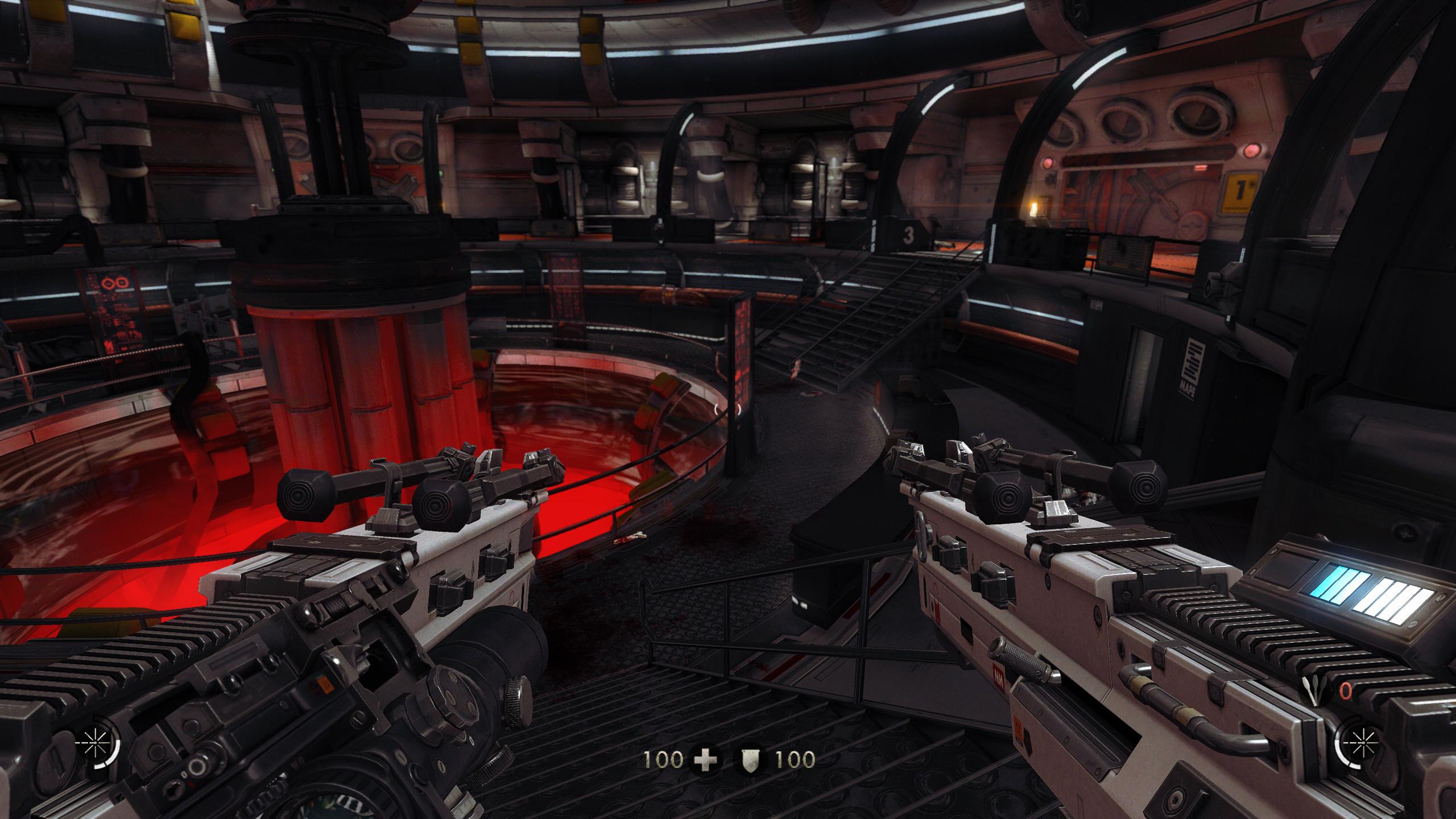
All in all The New Order is a better showing for id Tech 5 than Rage ever was, and the Old Blood is even better (noticeably so) but that doesn’t make it actually good. It runs well on weak machines, it isn’t straight up ugly, it can have impressive effects and areas, but its just so much of a mixed bag technologically. Every good point has a just as bad counter-point in all but animation and sound. I can’t give it very high marks here. I do suspect a part of its problems lie in it being a cross-generational game which also came out on PS3 and Xbox 360, but many better looking games were in a similar position.
Presentation
Wolfenstein: The New Order is available on Steam and is often on sale these days or bundled with other games of the series except for Wolfenstein (2009) which for some reason isn’t for sale at all. We’d really love to see The New Order get a GOG and even an Origin release at some point too.
Graphical fidelity is important, make no mistake, but ultimately its art style that matters more for a game’s look and feel. MachineGames made some interesting choices with The New Order for sure and I quite like them.
For starters Wolfenstein doesn’t seem to go for a very realistic tone. Whilst Return to Castle Wolfenstein was going for something that is both realistic and reminiscent of the old post-WW2 War stories comic books, The New Order seems to have adopted a very pulp science fiction tone. Another interesting thing to note is that the game alternates a lot with its looks based on the levels and their tones. Some have a very oppressive, totalitarian state feel, bleak colours, fairly ugly on purpose but still consistent design. Others go all out on the fictional elements with more vivid presentation and very interesting backdrops. All in all I think it is a good, confident tone for the game, even if not the prettiest (always) but it seems to always be in sync with the level or story beats.
One thing that stood out to me is the architecture. The Nazi’s 1000 year empire has been modeled following some of their most insane ideas. The Welthauptstadt Germania (World Capital Germania) seems to strike a good balance between their real world plans and fictional pulp. The Volkshalle dominates parts of the ones beautiful city’s skyline and the concrete structures and cameras behind every corner make it a place that inspires both awe at the rabid ambitions of the regime and also makes a point to how inhuman it is. Even lesser known projects such as the Breitspurbahn (Night Train) make an appearance and add to the authenticity and world depth.
One simply has to mention the amount of variety on display as well. From war zones and ancient castles, to submarines, ruined bridges, underwater techno-temples… and even a moon base! The colour pallet changes often, personalized props and textures are used for the different level types, and custom uniforms for the Nazi soldiers make an appearance often. It is great stuff for sure!
Another thing MachineGames have nailed is the actual sound design. It is truly outstanding. Ambient noise is well made, weapon sounds are very powerful, conveying the savage machinery at play. I can think of nothing bad to say at all here, it all sounds very good.
Then we get to the soundtrack and absolute amazement ensues. All Wolfenstein games have had awesome tracks and TNO is no different. This time however there seems to be a focus on both futuristic electronic music as well as very interesting, alternate history versions of classic 50s and 60s songs. In-game, the effect is definitely felt and players can unlock many of the songs and soundtracks to listen to later. Great job here and a truly unique feeling.
Voice acting work is also well done. The actors were well chosen and carry their scenes fairly passionately, no matter how large the ham may be. One has to note that Germans often actually speak in German! Something that was unfortunately missing from both Return to Castle Wolfenstein and Wolfenstein 2009. This helps with immersion and serves as a nice bilingual bonus.
The UI of the game is very solid overall and I can’t complain too much. It takes a bit of time to get used to it, but it isn’t too complex nor slow and is quite easy to navigate. It fits both consoles and PC very well and controls are almost fully changeable (with the only 2 exceptions requiring an ini tweak though).
In terms of overall presentation, The New Order reclaims a lot of ground. With an interesting and very well executed art style, varied environments, great music and very good voice acting it manages to impress. It isn’t spotless though. Whilst definitely pretty good, the UI and options menus could be even better, with even more options and customization, but it does make a much better showing here than in the previous categories.
Storytelling
This is probably the most startling section since no one really expected what MachineGames were doing with The New Order. Whilst previous titles such as the 2001 Return to Castle Wolfenstein (especially) and Wolfenstein (2009) had some forays into interesting action-based storytelling, but not to the extent we see in the newest games.
To start with the simple set up of the story (since it is not considered a spoiler) – its 1946 and the Allies are losing the war and they are losing it badly. Blaskowitz and other soldiers are sent on a last ditch attempt by the Allied war machine to find the man responsible for the Nazi’s advanced technology, kill him, steal his plans, and destroy his compound. Unfortunately, the plan fails and BJ ends up in a coma as the world is crushed by the Nazi war machine. When he wakes up over a decade later, in a mental asylum he is greeted by a defeated world full of misery, crushed under an authoritarian state.
The parallels to dystopian fiction are clear. The regime’s brutality and oppressive nature as well as over the populace are clear. The colourful European cities turned to a totalitarian grey, and everyone, including the German civilians suffer for it. The game shows a terrifying vision of a police state and it doesn’t hold its punches.
Of course, Wolfenstein is Wolfenstein, and part of its unique take on things always lies with the camp, the pulp – in this case 40-60s pulp science fiction. This artistic choice helps the game’s look and story feel seem less dreary and more playful, when the tone is right. I will admit, I am impressed at how well MachineGames managed to nail these things and I absolutely love the contrast.
At the core of their new focus on storytelling is the revised and upgraded character of William “B.J.” Blazkowicz, the protagonist of the Wolfenstein franchise. An American spy of Polish and Jewish descent, he specializes in one-man army missions behind enemy lines, but his TNO rendition adds a lot to his character. Now Blazko is voiced and will often remark about his current state as well as talk to other characters. No longer is he the silent protagonist more akin to a fridge or a bear than human, now he is a real person. And the picture the game paints is that of one very troubled person, with both great humanity and an extreme propensity to excessive violence. His lines of dialogue are very interesting as it seems our protagonist is now also quite the dreary poet and often talks about events from previous games in the series in a self-referential manner.
The New Order makes a really good effort at making BJ appear more human, more believable and interesting. We get to see his dreams, his aspirations for the future, his values and understand how it is that he can make bonds to other characters. It is quite rare to get to know a character this well in gaming, and I am honestly surprised that a Wolfenstein game went this far with the depth of its protagonist.
The game uses this almost apocalyptic in tone setting to magnify the personalities of the people in the resistance. The members BJ gets to talk to and interact with shine, showing different personalities, ways of thinking and ideals, as well as different positive and negative traits of the human condition under duress. The game does its best to make them feel more fleshed out and developed than they really are and make them seem more personal.
Of interesting note is how the game seems to use dreamlike states as a way to accentuate its pacing. Brief moments of joy and personal happiness are framed as ethereal due to the soft focus in such cutscenes. The game’s story and theme pacing is very odd due to choices in its presentation and usage of camera angles and whilst I do personally believe it is a very good idea that makes it stand out and accentuates characters and situations, it is still non-standard so it may pull some people out.
When it comes down to the regime’s representation within the game, things become even better. Most video games just say “Here are Nazis, kill them as they are evil” and that is the limits to how deeply they explore the third Reich and totalitarian regimes in general. The New Order goes many steps beyond what almost all other games dare to do and actually represents the Nazi ideals and their plans for the world in sickening detail. The dehumanization of the German troops and disregard for previous achievements of the country. The police-state of neighbor vs neighbor, spying on the different, killing or torturing the different be they “Aryan” or otherwise. Policing of art and culture, creating slave labor camps and killing all resistance under their iron boot. Certain scenes of the game take place in the heart of the “redesigned” Berlin (now Germania) and it shows that life for even the common Germans or soldiers is… not always the most pleasant. And the game is not afraid of talking in notes about the crushed resistance in other countries – like France, Russia, United Kingdom, China, and others. It lets the imagination run wild. It does not however let any ambiguity get in the way of perhaps the most sickening part of the Nazi regime – The Holocaust. The New Order manages to approach even this topic boldly and show both nightmarish and respectful content within this bloody topic.
One has to also be fair – the game goes over the top at times in its representation of the sick ambitions of the Third Reich and what possible life within it would be, but not by much.
A truly good accomplishment that elevates the game for me is that it is not afraid to show, despite all those horrors, the humanity of the Nazis as humans. Instead of going the silly route of stating that the enemy of the free world is inhuman monsters, the game makes it clear that this is part of the human condition and humanity that we are fighting. Some soldiers talk about their families, being sick, feeling oppressed in the war machine, without a future or about their dead friends. They can show compassion at times in dialogue. When confronted with near certain death by the protagonist, some soldiers even cry for help or just bravely charge back knowing they will likely get slaughtered. It is poignant stuff for sure and shows respect for the game world.
More interestingly than even that, the game offers even its major villains, truly vile and monsterous people… at least some human characterization too. They are driven not just by pure ideology but also other, generally positive within other contexts traits.They don’t lack humanity, its their humanity which makes them more repulsive even whilst letting us feel just a bit of sympathy for them. This is not to detract from how vile they can be, it rather nuances and accentuates it.
Now it isn’t perfect, not by a longshot. Whilst The New Order does do a lot of world-building, it also falters in terms of explaining some of its world’s elements and events in good enough detail. For example it is known that the PanzerHund (huge robot dogs) somehow managed to defeat the Soviet tanks on the Eastern Front… yet that doesn’t make much sense considering their gameplay power and performance. The many wonder weapons of the Germans make good gameplay sense, but their usage in-universe is simply… sub-optimal from a realism standpoint.
The Nazis somehow managed to produce a big number of these superweapons despite being at war with much stronger (economically) countries, and to still have enough manpower to occupy a large part of Asia, Europe and North America. They managed to also repulse Operation Overlord and Jupiter with light casualties. There is a way to explain these things or allude to reasonable solutions, but they aren’t in the game. Minor complaints for most gamers, but worthy for those who come here for the camp alternative history storytelling within the game.
It also could have done better with explaining its science fiction elements. RTCW did a better job at making the Nazi wonder projects seem realistic or believable, whilst with The New Order one has to wonder whether Rule of Cool is the only reason some of these things exist. Not saying that is bad, but being able to have your insanity cake and eating it with some level of logic is even better.
Finally before the conclusion there is a pet peeve of mine with a big reveal during the middle part of the game.
Spoiler Warnings!
Making the Daat Yichud be responsible for almost all of the Nazi technology is a mistake to me. Not only does it lend some actual credence to the anti-minority ideas the Nazis or Soviets had, as they really are an existential danger to humanity with so much power, but it also makes the rest of humanity’s accomplishments, which do exist in this alternate universe take on WW2 and its outcome, look pathetic in comparison. I really do not personally like this idea, even if its execution is competent within the game.
End of Spoilers!
MachineGames went in hard on thematic depth, characters and style for sure. The New Order feels like a combination of an European art-house movie of medium depth and a grindhouse revenge story, set in a dystopian almost apocalyptic world full of wonder and death. I think what MachineGames have created is one of the most interesting experiements in FPS storytelling of the past decade and applaud them for it. There are possible problems with pacing, some characters really are more ideas than fully fleshed out beings (a problem that is actually an issue when you spend a fair amount of time with them) and certain issues touched upon in the game world are never fully explained or explored, let alone the science fiction in the game being more science fantasy (something which is not necessarily bad though). And even with all of that I still consider it a very strong contender in the storytelling department, not just for a Wolfenstein game, a series famed for other things, but also for all FPS games.
Gameplay
Wolfenstein’s classical gameplay is back!
Returning from the original vision of Silas Warner is the stealth combat. A staple since the very first version of this legendary series, it is here as one of the main elements of the gameplay loop for The New Order. Blazko has an assortment of stealth weapons starting with his knives for brutal melee takedowns, throwing knives for good measure and silencers for his pistols. Sticking to the shadows and cover, watching patrol routes and slaughtering the Nazis is a lot of fun. Adding depth to the system is the need to watch out for German officers who come with radios and can quickly alert the entire nearby area about our protagonist as well as call in reinforcements for the ensuing battle. It isn’t a super deep system unfortunately, and its mostly excellent level design that keeps it working well. In some ways, due to the loss of night vision, and special stealth missions it is actually not as deep as the one in RTCW. It is also quite easy overall, especially for experienced stealth gamers to pass entire levels undetected.
MachineGames thought of the less patient as well. The guns blazing approach itself has been developed further since Wolfenstein (2009). The player can now lean in all directions and fire, iron sights are used effectively like in 2009 and so are scopes. Some guns have alternate fire modes and silencers.
For the really blood thirsty, the ability to dual wield weaponry in order to basically double their potential firepower is a welcome addition! Very few games allow for such stupid yet fun ways of using guns and it is not without negatives – reloading will take more time and recoil is increased! This is incredibly satisfying especially when the automatic shotguns are used, effectively turning entire platoons of enemies into gory paste.
The feel of the weapons is very good, with solid animation work, good sounds and fairly fast time to kill. Armored soldiers and robots will have their armor plating deflect shots and fall off during battle. The AI for the enemy soldiers is generally good. They will take cover, use overwatch, try to pin the player down and throw grenades fairly accurately. It is not as good as FEAR in practice, but it is better than most current day FPS games and noticeably so.
In terms of super weapons, The New Order is a tad tamer than 2009 and arguably Return to Castle Wolfenstein. The only truly unique weapon is the LaserKraftWerk which is a powerful energy weapon which can be upgraded with different upgrades and attachments found as secrets throughout the game. In its fully upgraded state it is a deadly sight to behold and even got a place on our Top 50 Superweapons article at number 17. It also has a unique mechanic where it can cut holes in light metal sheets for use as cover or viewing ports. A very cool if weird idea, though it usually is not all that useful.
Standard weaponry is very solid though not exactly special. Most guns have different firing modes which helps with effective variety in ways to kill. Unfortunately, during the game there are 2 unique guns that are very cool and interesting but used for a very limited amount of time and in specific circumstances. It isn’t quite as liberal as RTCW at throwing guns at the player.
The handling of secrets is interesting. Unlike the constant pressure to search and collect as in Wolfenstein 2009 which got annoying at times, we now have more and more varied collectibles spread out throughout the levels but with little pure gameplay incentive for most. They can be very well hidden and hard to find, though a great deal of them (not all!) can be found or guessed at if the player finds a map in the levels. This map not only gives a full overview of the areas it also has hints or locations of collectibles. I don’t know how to feel about this as not all secrets can be located in this manner but it still seems to be a bit of a cop out and lessens player satisfaction if they find and use the map.
The sheer level of gameplay variety within many levels is also quite interesting. From exploring underground sewers with a miniature submersible, to looking for and collecting items inside dense, lived in levels made to soak atmosphere or sneaking through a concentration camp to find certain things. The Half-Life approach of making stages more varied and interesting with certain gameplay styles, whilst a bit stifling to player ingenuity at times, is appreciated. It makes the levels stand out and is interesting and playful with level design.
Overall The New Order is very solid in the gameplay department but it does have flaws in execution and ambition. I feel a lot more can be done with stealth these days and more weapons would be a great idea.
Lasting Appeal
The New Order is a fairly long game, in my completionist playthroughs taking around 16 hours to complete. It has some replay value too, as people are encouraged to try out the other “timelines” . The levels change fairly little between the two possible timelines, so the major gameplay difference would be very slightly different tactics due to different collectibles and different characters with modified scenes and dialogue. If you liked the game the first time, it is probably worth it whilst trying different playthroughs within the levels themselves. Unfortunately, some of the levels are more scripted and linear and don’t lend themselves to much replayability.
The game also has a level select screen and a type of New Game + mode that I personally find quite interesting. Replaying different levels also counts perks and skill that may have been acquired later on. A simply if a tad weird way of handling NG+, but it can definitely aid players if they are trying to go through the fairly brutal Uber difficulty on their second playthrough.
All in all there is some replayability in the game, and it does support multiple gameplay styles in most levels, but do not expect too much. Unfortunately, it seems modding is out of the table and the game never got any mod support.
Conclusion
Wolfenstein: The New Order was a very pleasant surprise for me. The game is seriously one of the best FPS titles of the past decade (which I realize isn’t saying too much) and I have to say I enjoy the bold new direction MachineGames has taken Wolfenstein to. The big dumb shooter is now one of the games with great, confident, if flawed storytelling. The polished and pleasant gameplay and contrasting themes and ideas are a great fit for the series. The Achilles heel though is in the technology — the game simply has issues with most modern hardware. id Tech 5 simply has issues and the jury rigging seems to have not aged well. The lack of AA and other questionable design choices are a real shame as well, because the game’s decent visuals would hold up a lot better with it. If one has luck (or future hardware and drivers have less issues) with the performance or can live with the odd hitching and fps drop for no real reason, and the unimpressive visuals – a true gem awaits!
Strengths
— Interesting and well realized story. Surprisingly deep and down to earth by almost any game franchise’s standards, with some really cool characters, themes, and ideas. An excellent overall balance of stupidity and seriousness and I can recommend it to people looking for games that at least try to push us forward in storytelling.
— Amazing soundtrack, great voice acting, excellent weapon sounds, an interesting if bleak art style and generally really interesting scenery makes for one hell of an adventure.
— Engaging gameplay with solid if not exactly exceptional stealth and very robust, powerful gunplay. FPS purists should be very pleased, Wolfenstein does not disappoint. Cutting and making cover for oneself with lasers and turning people into skeletons never gets old.
— Game is fairly long and has replay value, even if not great. Also is part of a series so if you like it, there is more to its unique take of the Wolfenstein franchise coming.
— Excellent soundtrack and a great presentation of retro-futuristic Nazi controlled Europe. Attention to detail is king and MachineGames know what they are doing it seems.
Weaknesses
— If you are looking for a graphical or technological powerhouse, even by 2014 standards, this ain’t it. The game looks underwhelming in terms of graphical fidelity, bar animations. To add insult to injury, it is often punishing on modern high end hardware for no real reason. This gets fixed in drivers and broken the next time Radeon or Nvidia release an update… which makes me believe that it is really the game’s fault for this. Physics also seemingly took a hit compared to Wolfenstein (2009).
— It isn’t quite as ambitious in gameplay as it is in storytelling. It is competent, pretty good even, but no new ground is pushed. In some ways one might argue that it even goes back on previous Wolfenstein games.
— No real modding. Whilst certain small mods exist, there are no custom levels and AI like for RTCW made by the community. A damn shame honestly.
— Alternate history fans would find themselves lacking. Many of the events in the game’s fictional world are used for dramatic effect or rule of cool and aren’t exactly as fleshed out as they would need to be.
Resources used in the making of this review:

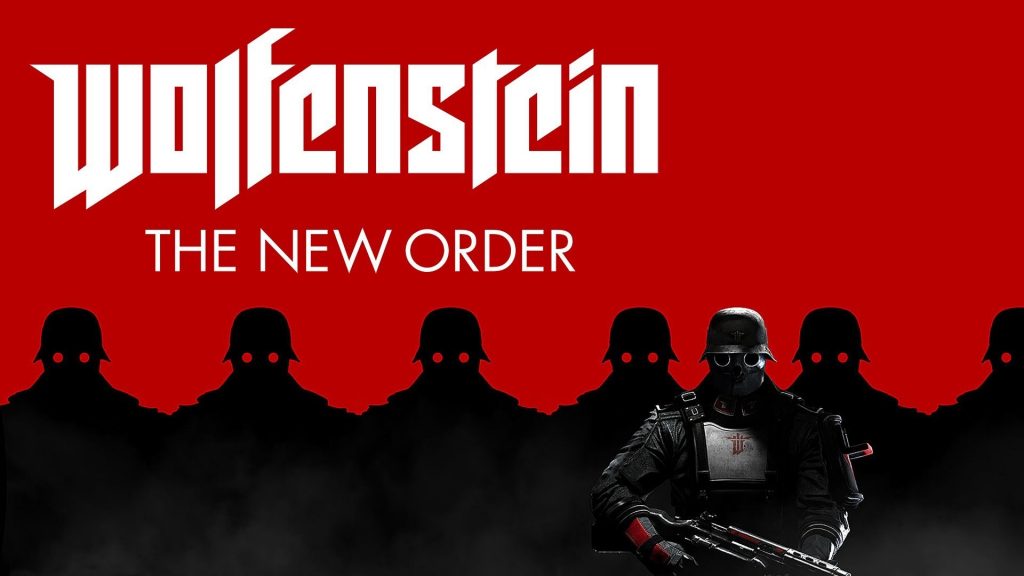
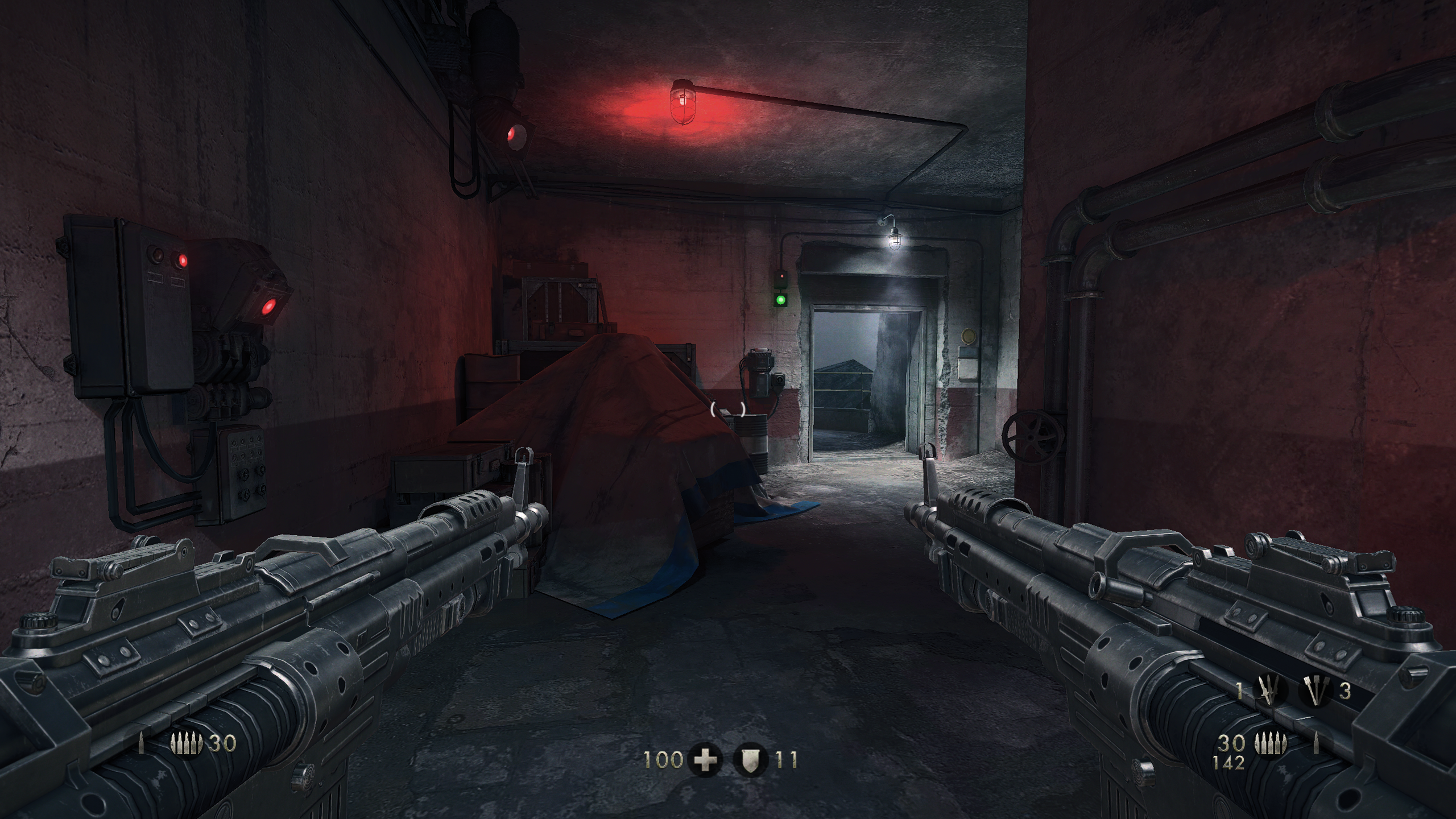
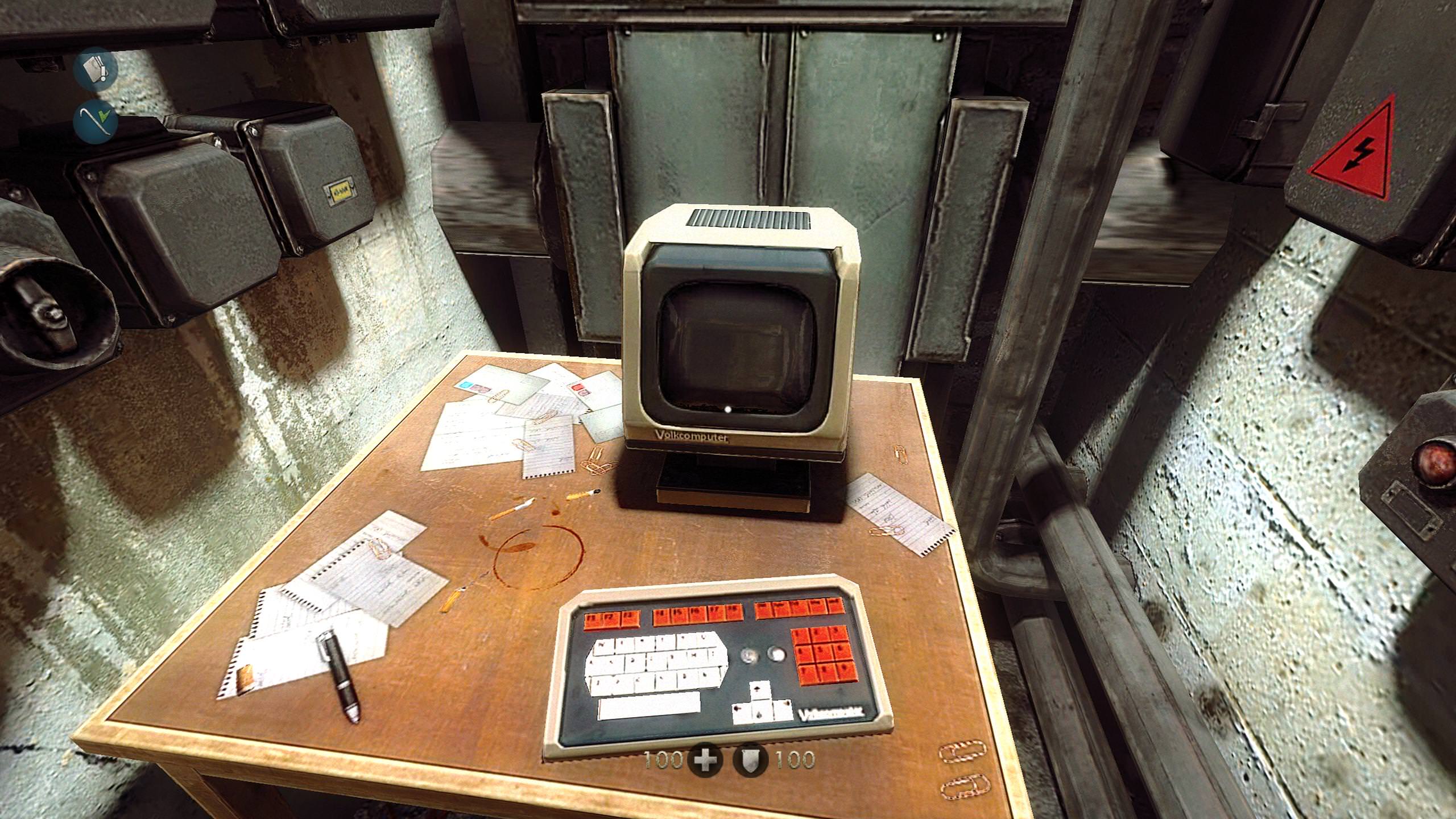

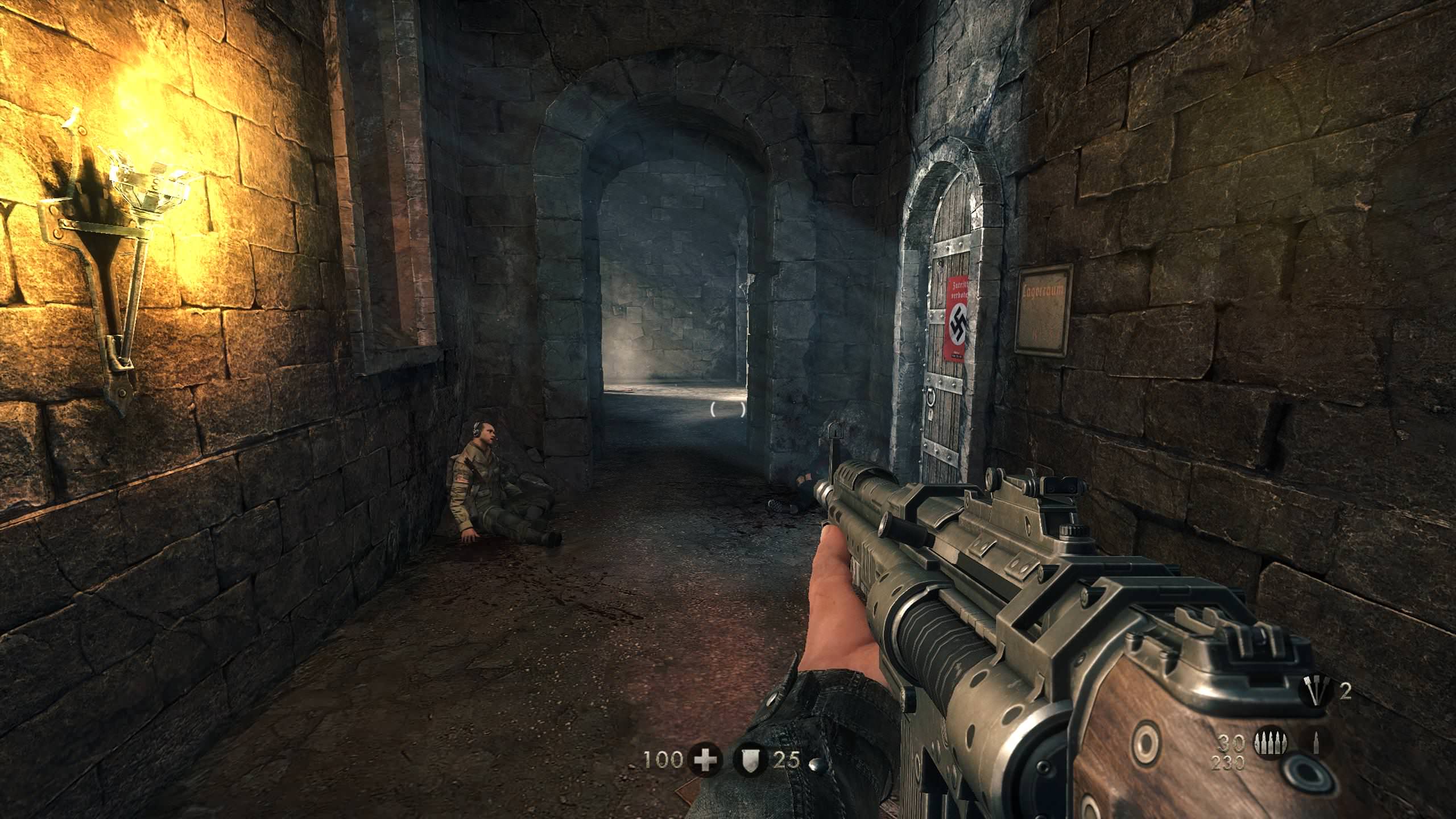

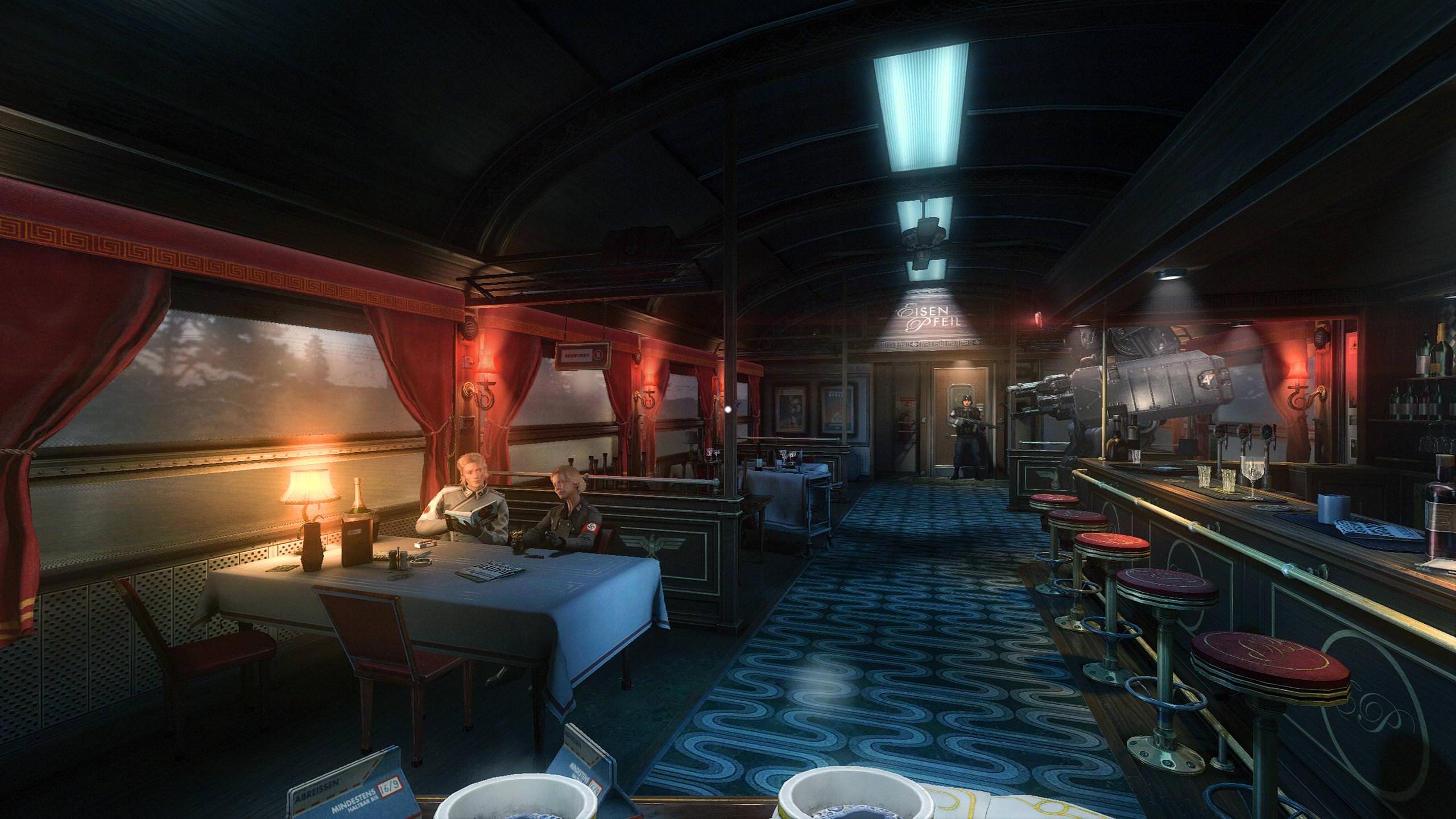

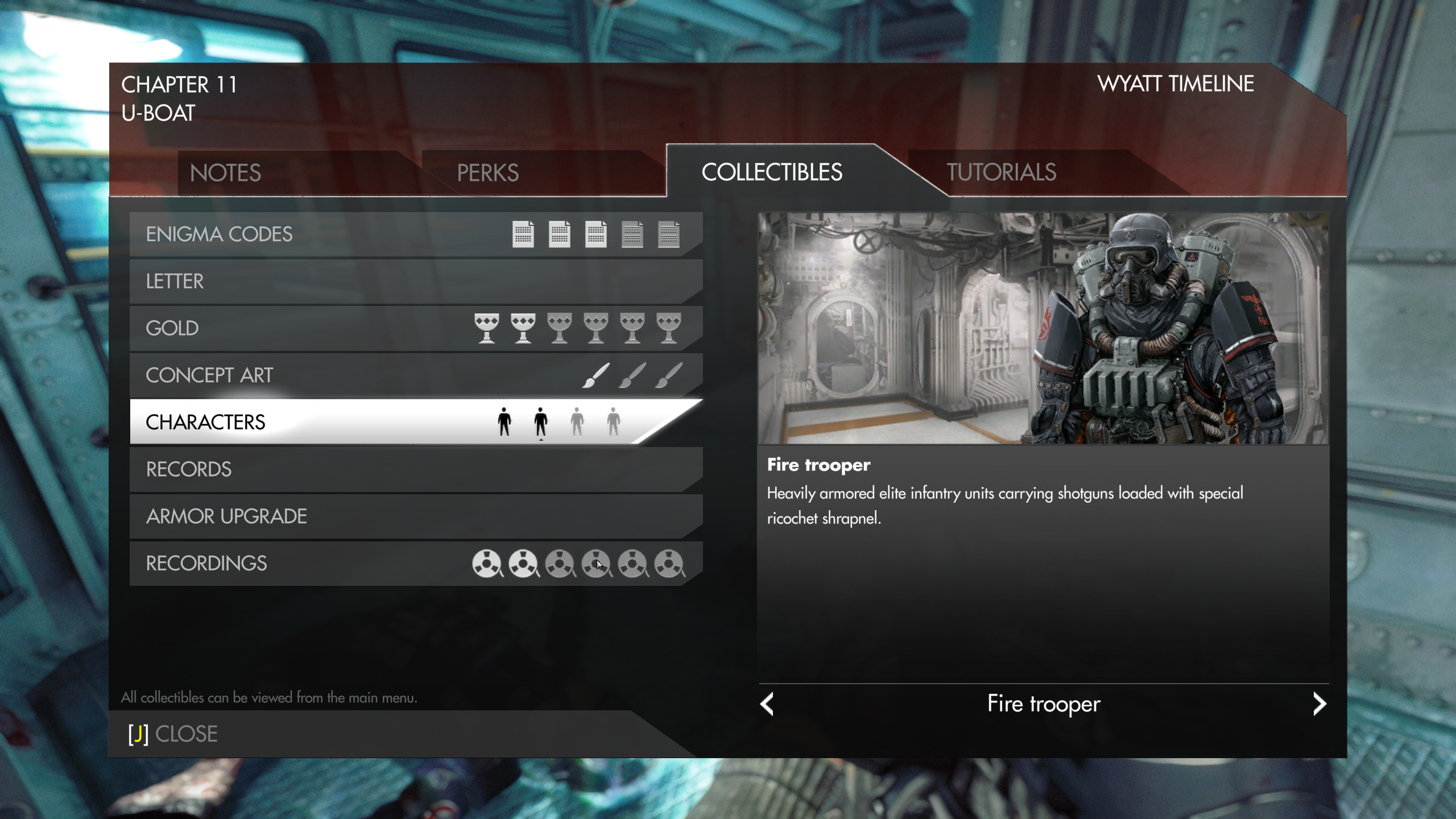

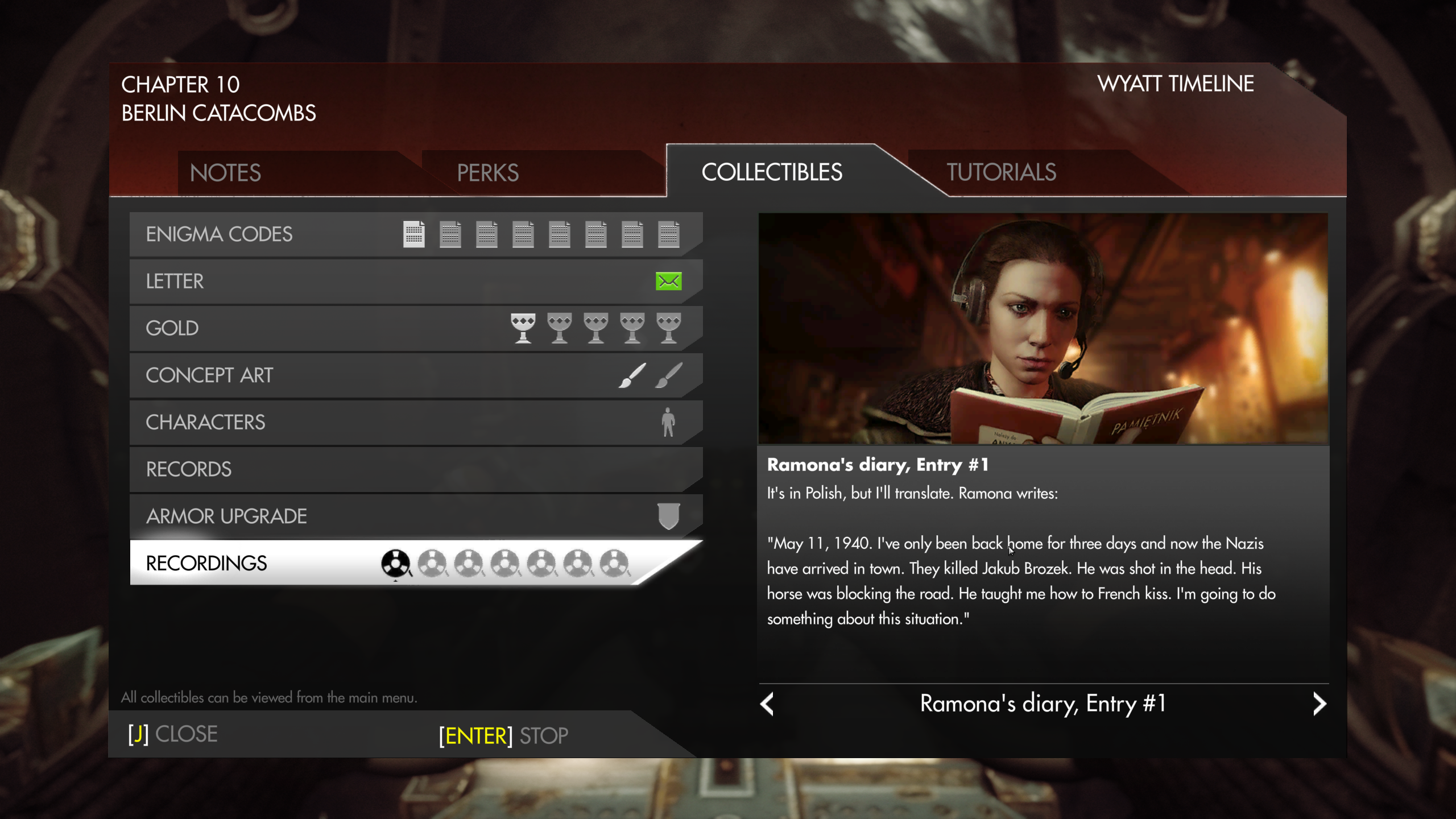
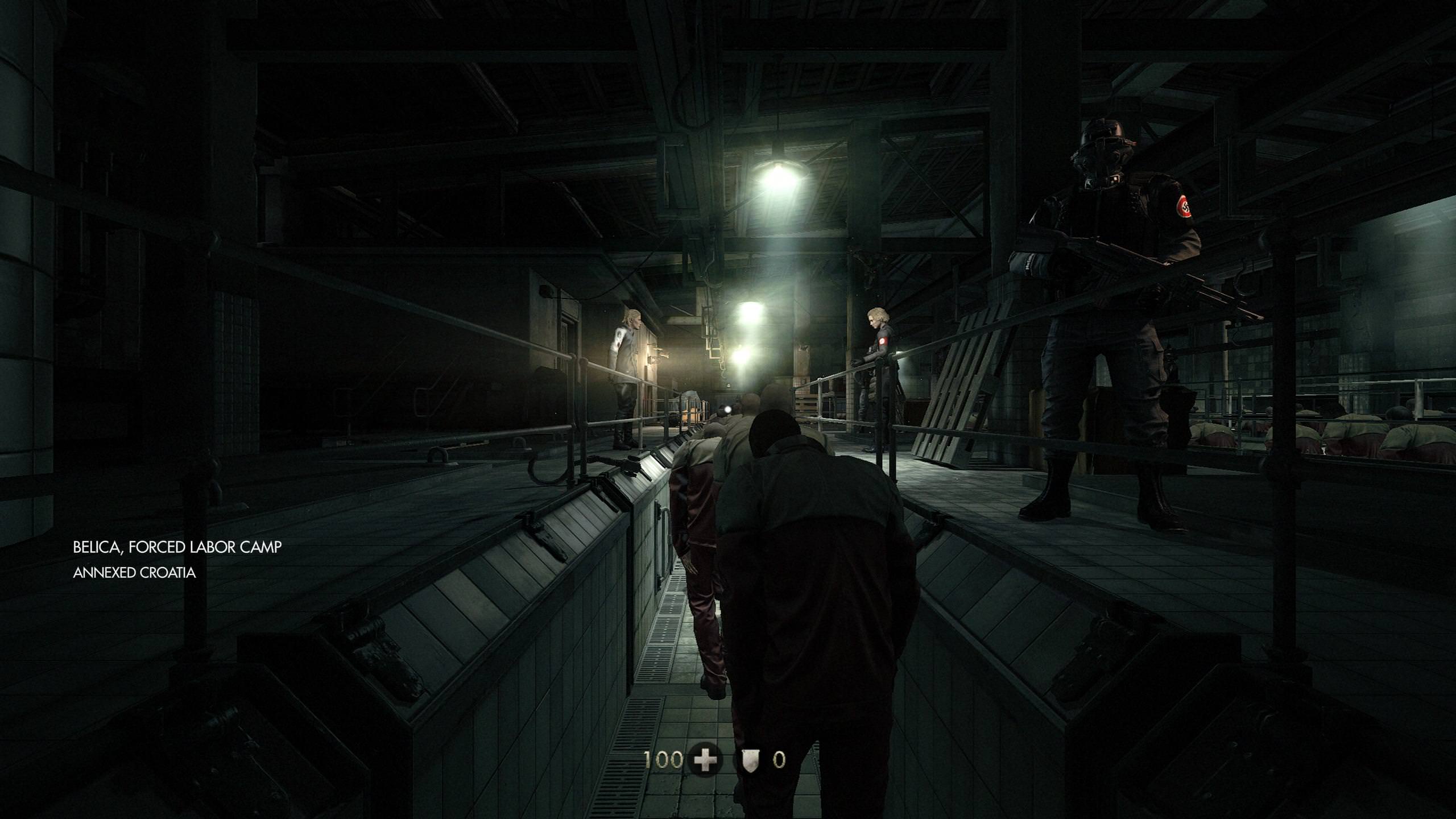
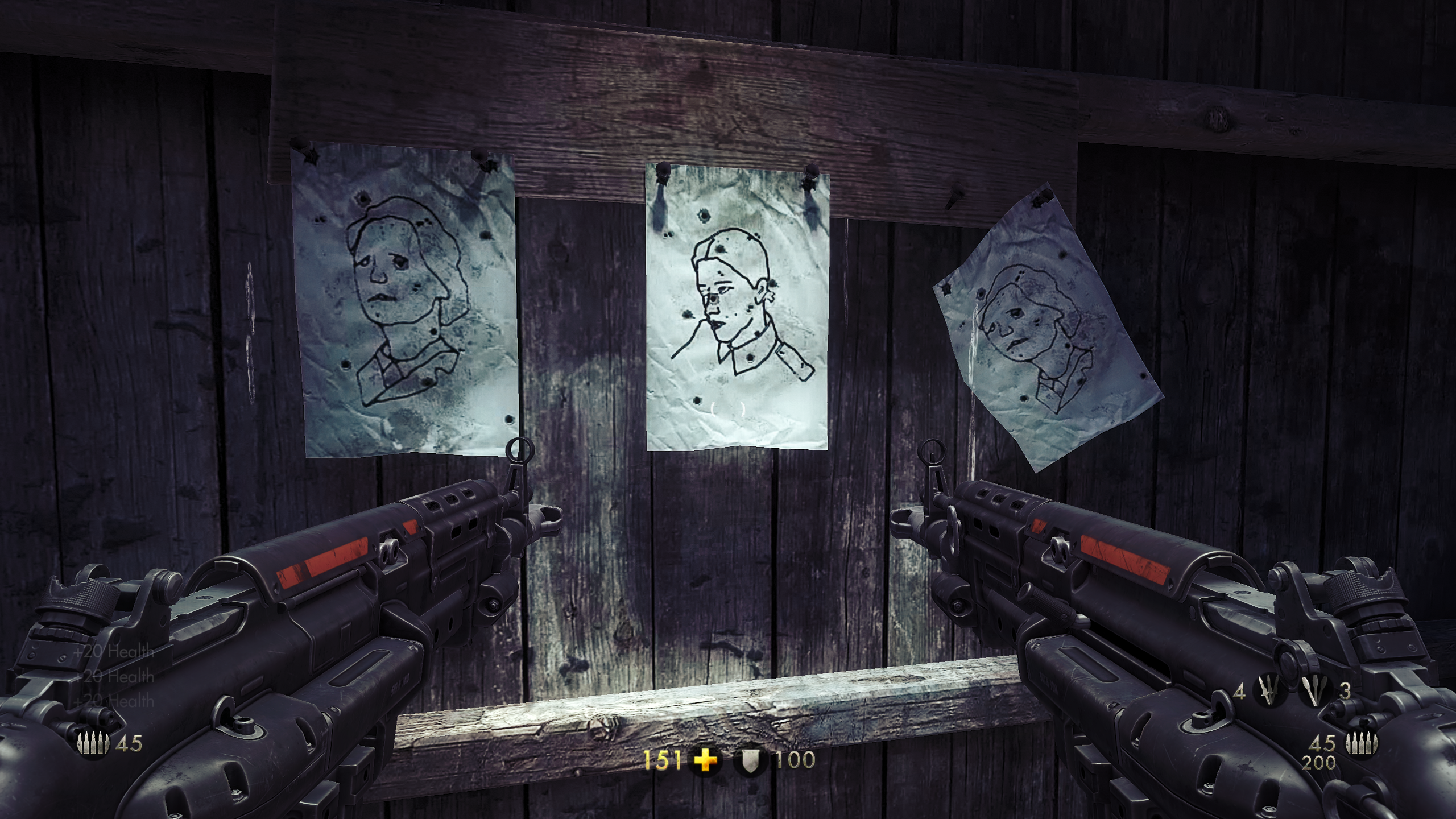
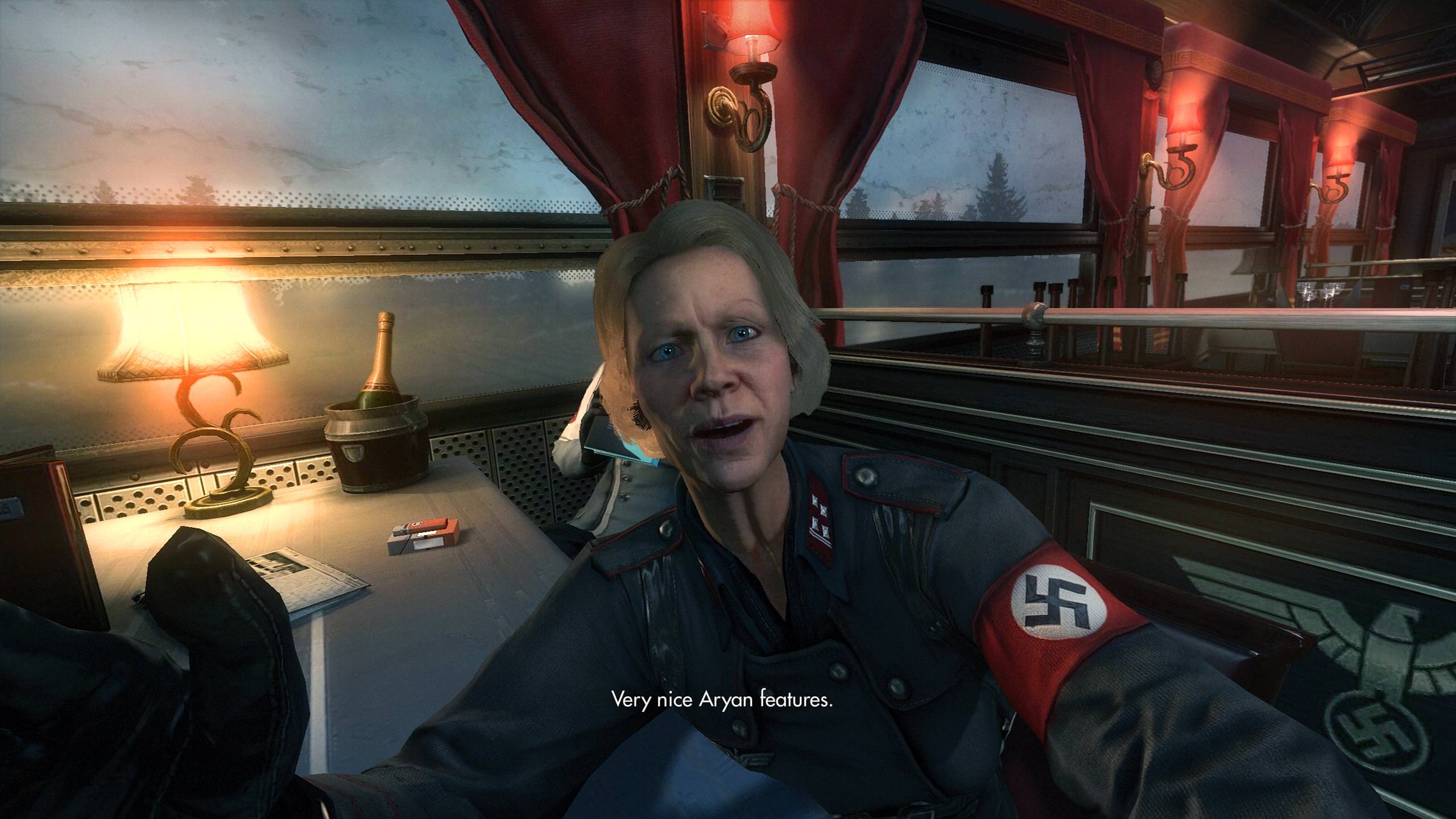


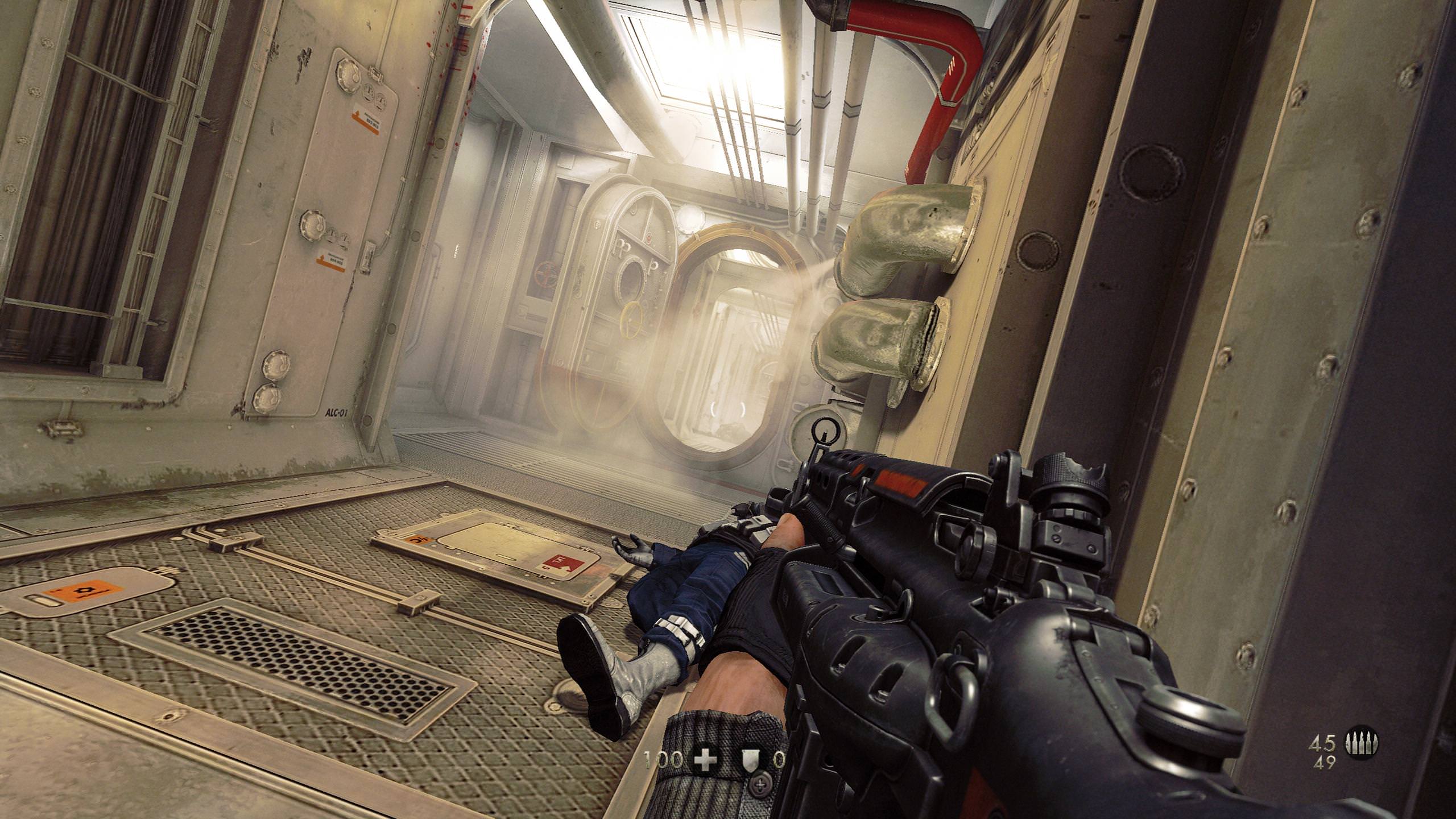

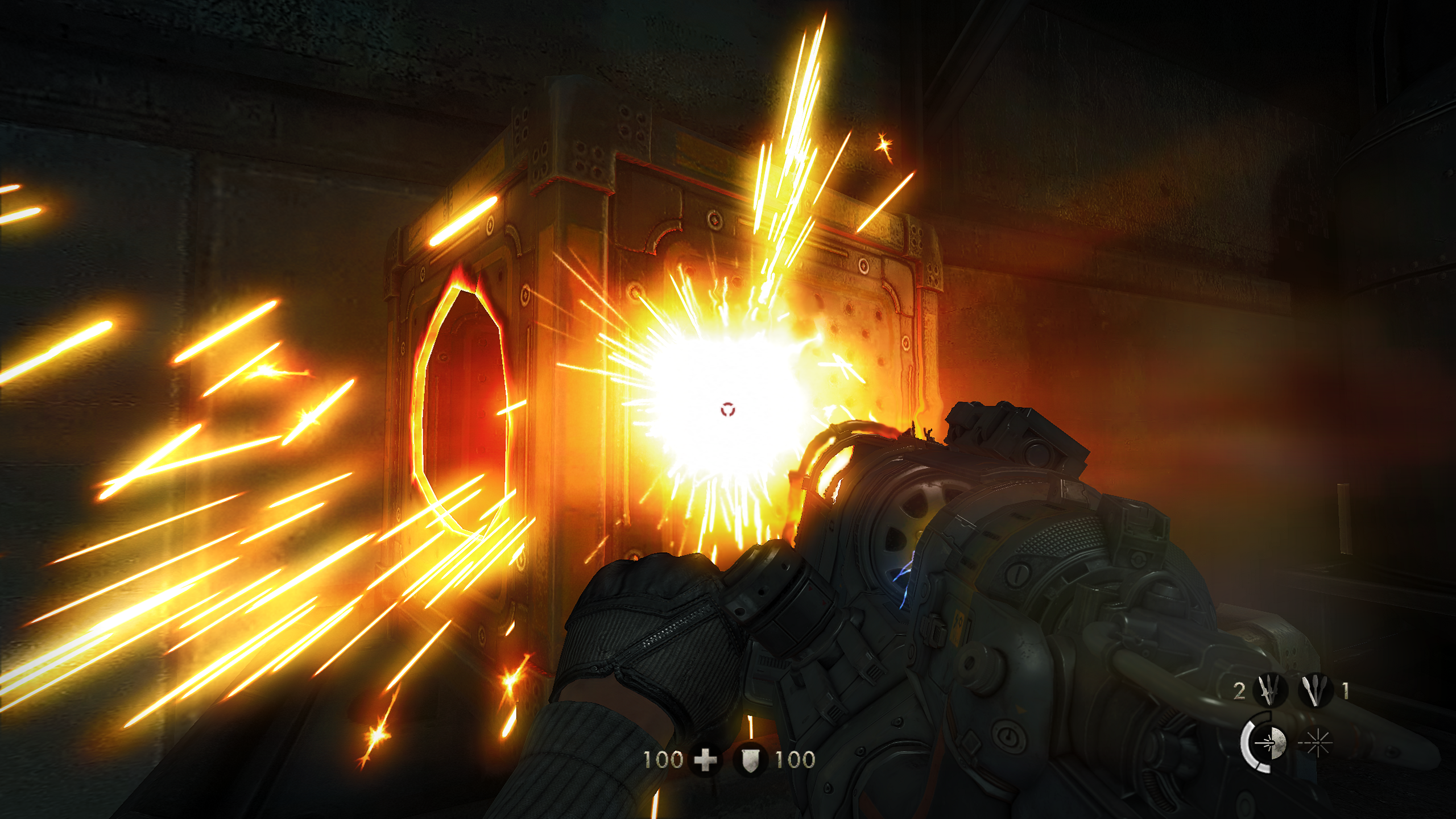
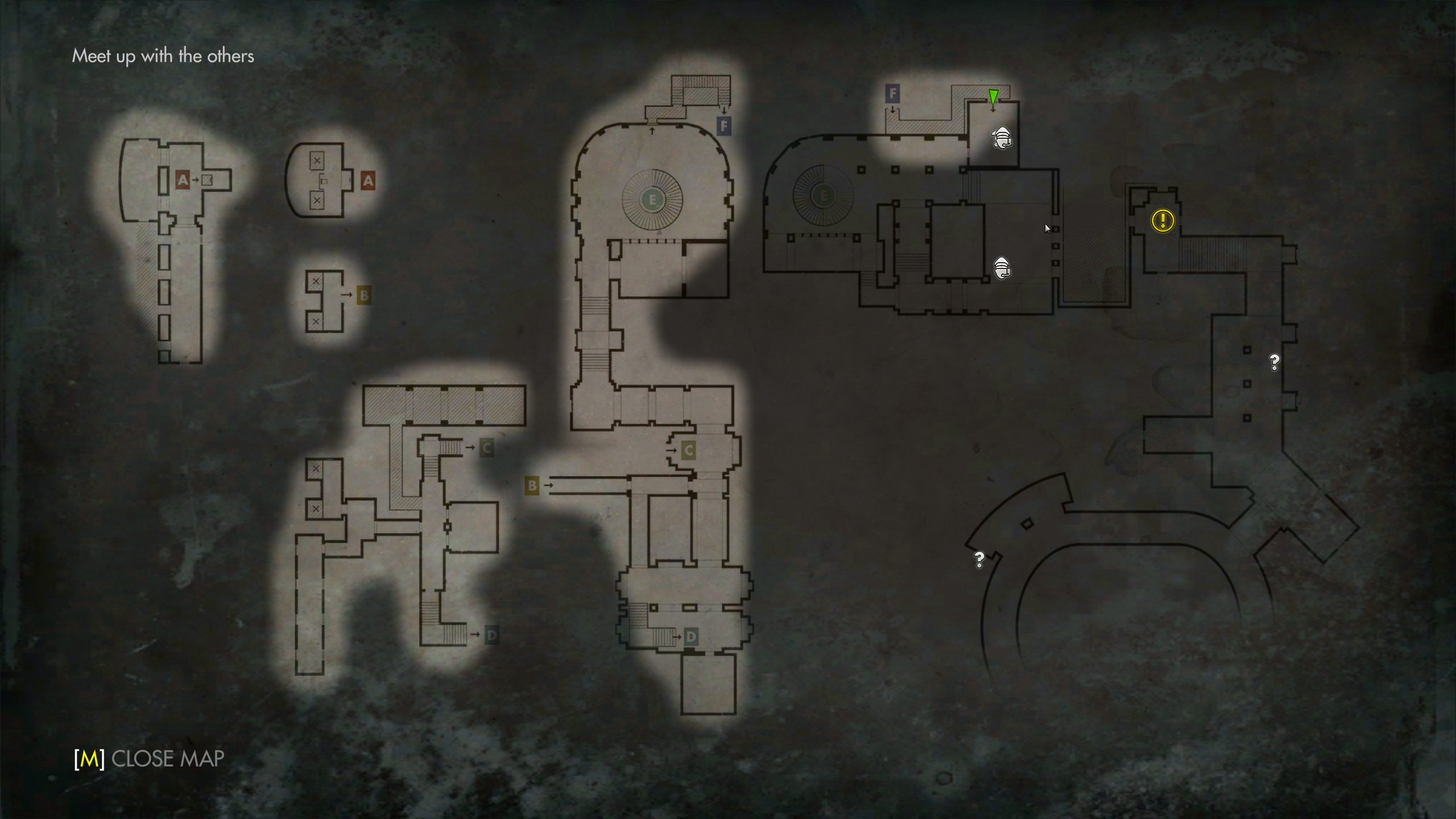
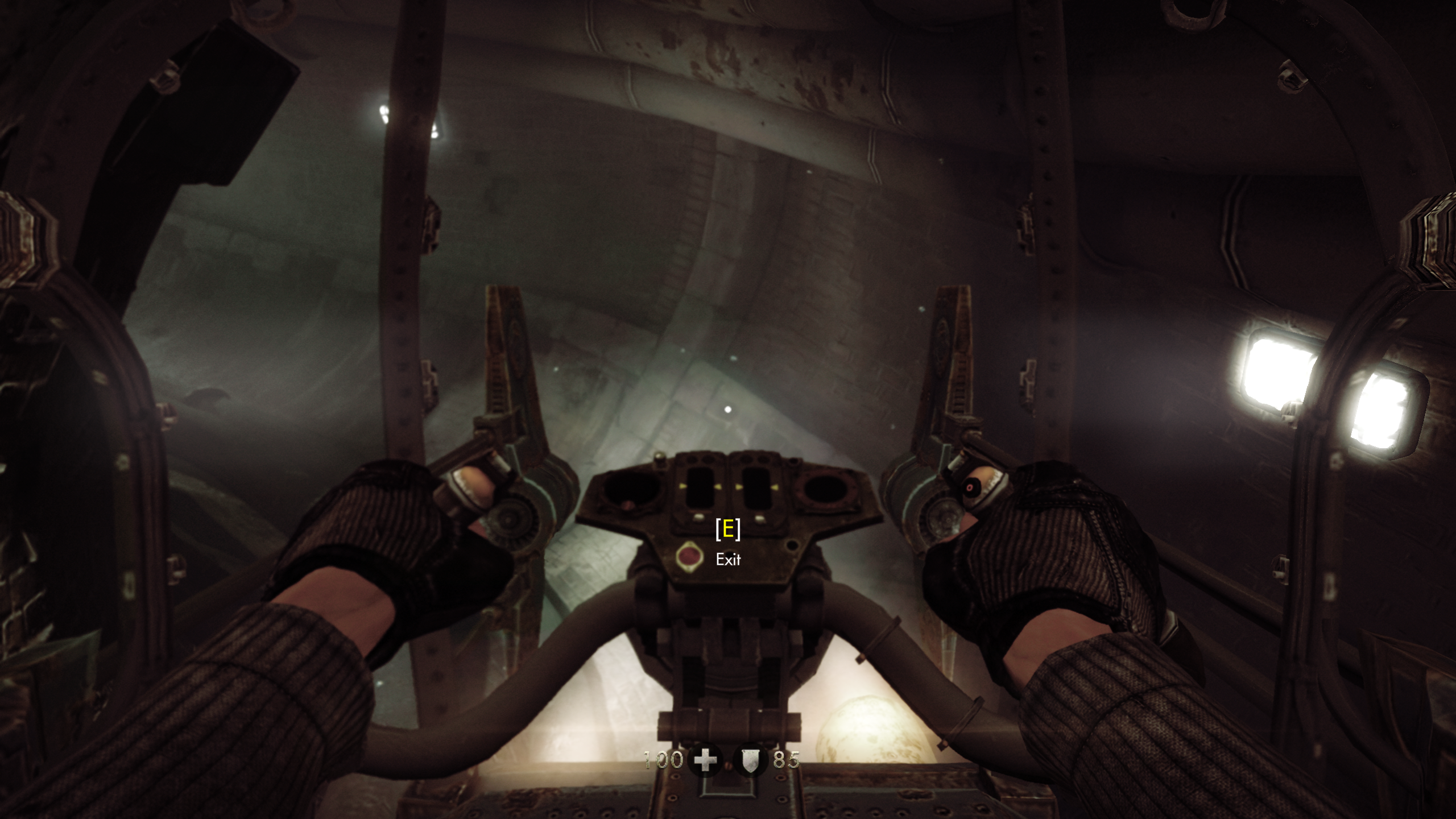

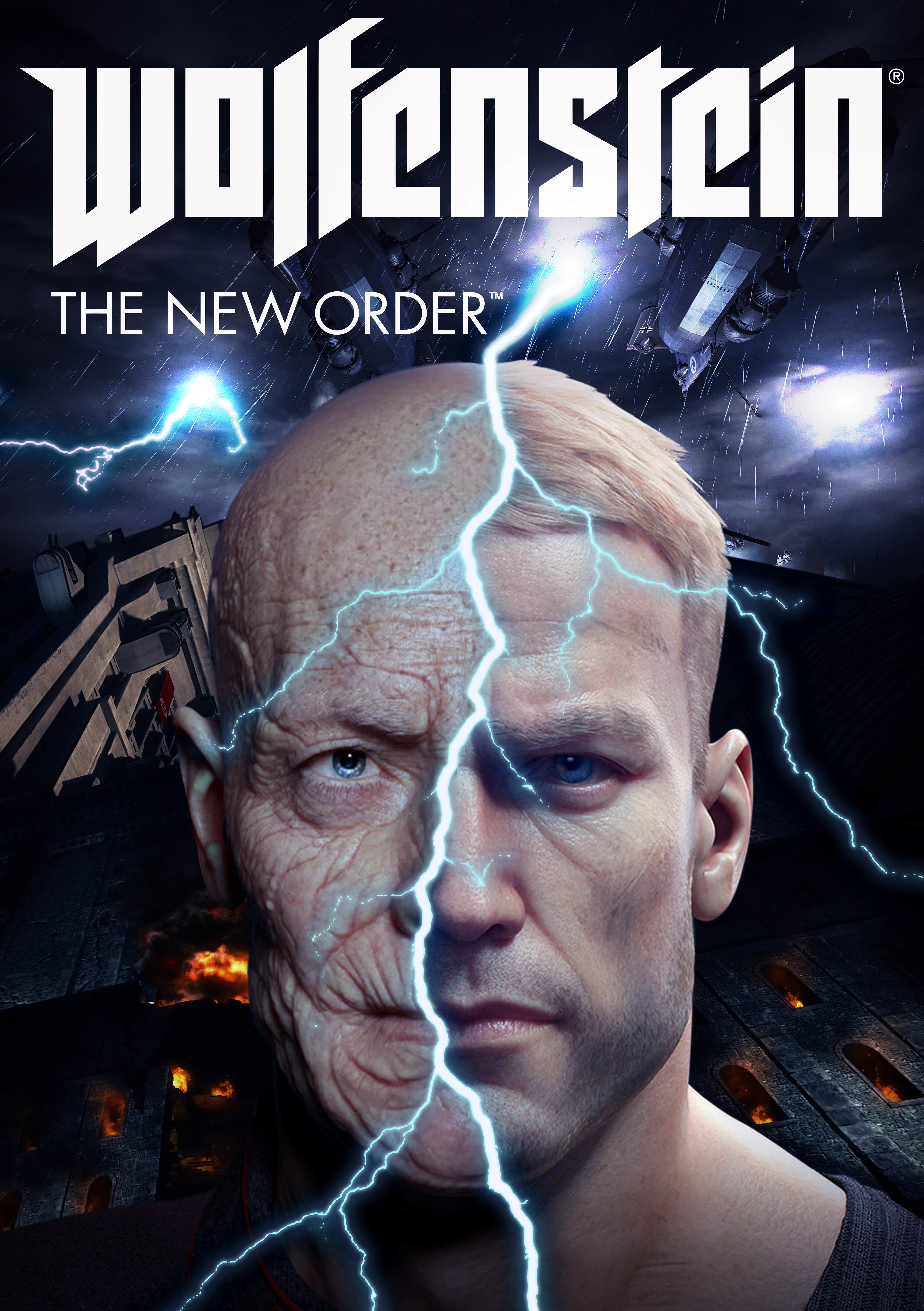



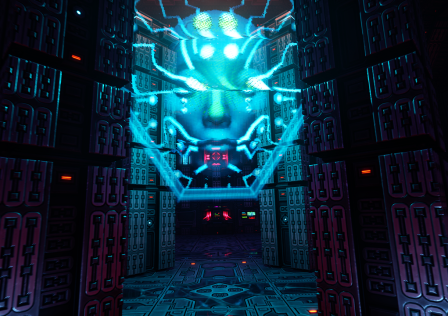
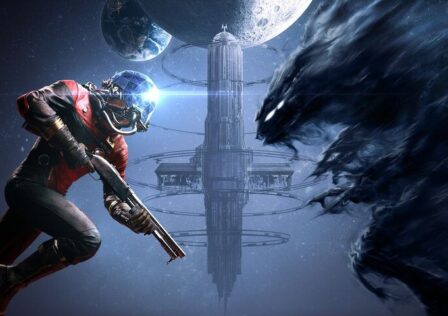
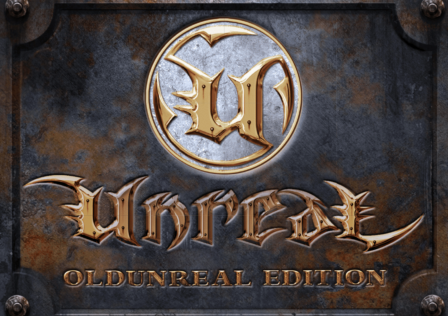
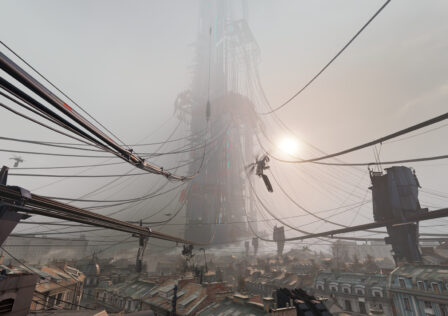
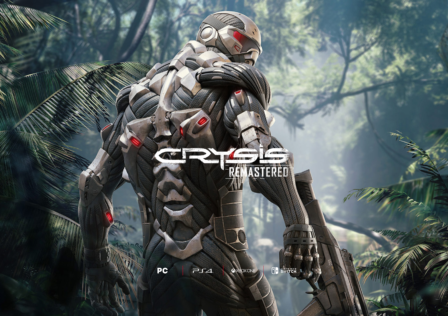
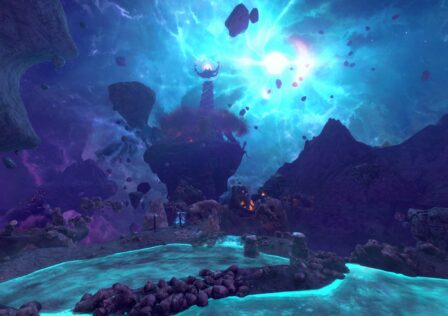
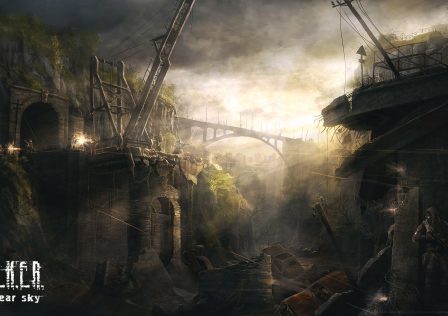


Good review! This is one I haven’t played yet. Think I’ll pick it up now… in the mood for a game with a good story line.
Good review! This is one I haven’t played yet. Think I’ll pick it up now… in the mood for a game with a good story line.
Just re-read this review having played the game now, and I’m surprised that the game’s biggest flaws were not touched on (arguably game breaking flaws). This game is a terrible console port, in terms of “Presentation” it is quite abysmal. The UI is praised but it’s really bugged, not reading mouse/keyboard inputs correctly and understanding scrolling correctly (e.g. you can click on a letter, try to scroll to read through it but it’ll instead scroll through all menu options, scrolling in the wrong place). The game is buggy as hell when it comes to inputs in general actually; good luck… Read more »